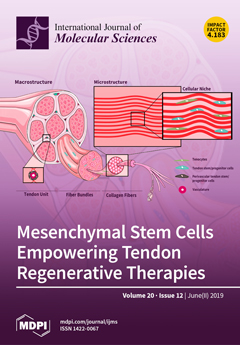Peanuts with high oleic acid content are usually considered to be beneficial for human health and edible oil storage. In breeding practice, peanut lines with high monounsaturated fatty acids are selected using
fatty acid desaturase 2 (
FAD2), which is responsible for
[...] Read more.
Peanuts with high oleic acid content are usually considered to be beneficial for human health and edible oil storage. In breeding practice, peanut lines with high monounsaturated fatty acids are selected using
fatty acid desaturase 2 (
FAD2), which is responsible for the conversion of oleic acid (C18:1) to linoleic acid (C18:2). Here, comparative transcriptomics were used to analyze the global gene expression profile of high- and normal-oleic peanut cultivars at six time points during seed development. First, the mutant type of
FAD2 was determined in the high-oleic peanut (H176). The result suggested that early translation termination occurred simultaneously in the coding sequence of
FAD2-A and
FAD2-B, and the cultivar H176 is capable of utilizing a potential germplasm resource for future high-oleic peanut breeding. Furthermore, transcriptomic analysis identified 74 differentially expressed genes (DEGs) involved in lipid metabolism in high-oleic peanut seed, of which five DEGs encoded the
fatty acid desaturase.
Aradu.XM2MR belonged to the homologous gene of
stearoyl-ACP (acyl carrier protein)
desaturase 2 (
SAD2) that converted the C18:0 into C18:1. Further subcellular localization studies indicated that
FAD2 was located at the endoplasmic reticulum (ER), and
Aradu.XM2MR was targeted to the plastid in
Arabidopsis protoplast cells. To examine the dynamic mechanism of this finding, we focused on the peroxidase (POD)-mediated fatty acid (FA) degradation pathway. The
fad2 mutant significantly increased the POD activity and H
2O
2 concentration at the early stage of seed development, implying that redox signaling likely acted as a messenger to connect the signaling transduction between the high-oleic content and
Aradu.XM2MR transcription level. Taken together, transcriptome analysis revealed the feedback mechanism of
SAD2 (
Aradu.XM2MR) associated with
FAD2 mutation during the seed developmental stage, which could provide a potential peanut breeding strategy based on identified candidate genes to improve the content of oleic acid.
Full article






